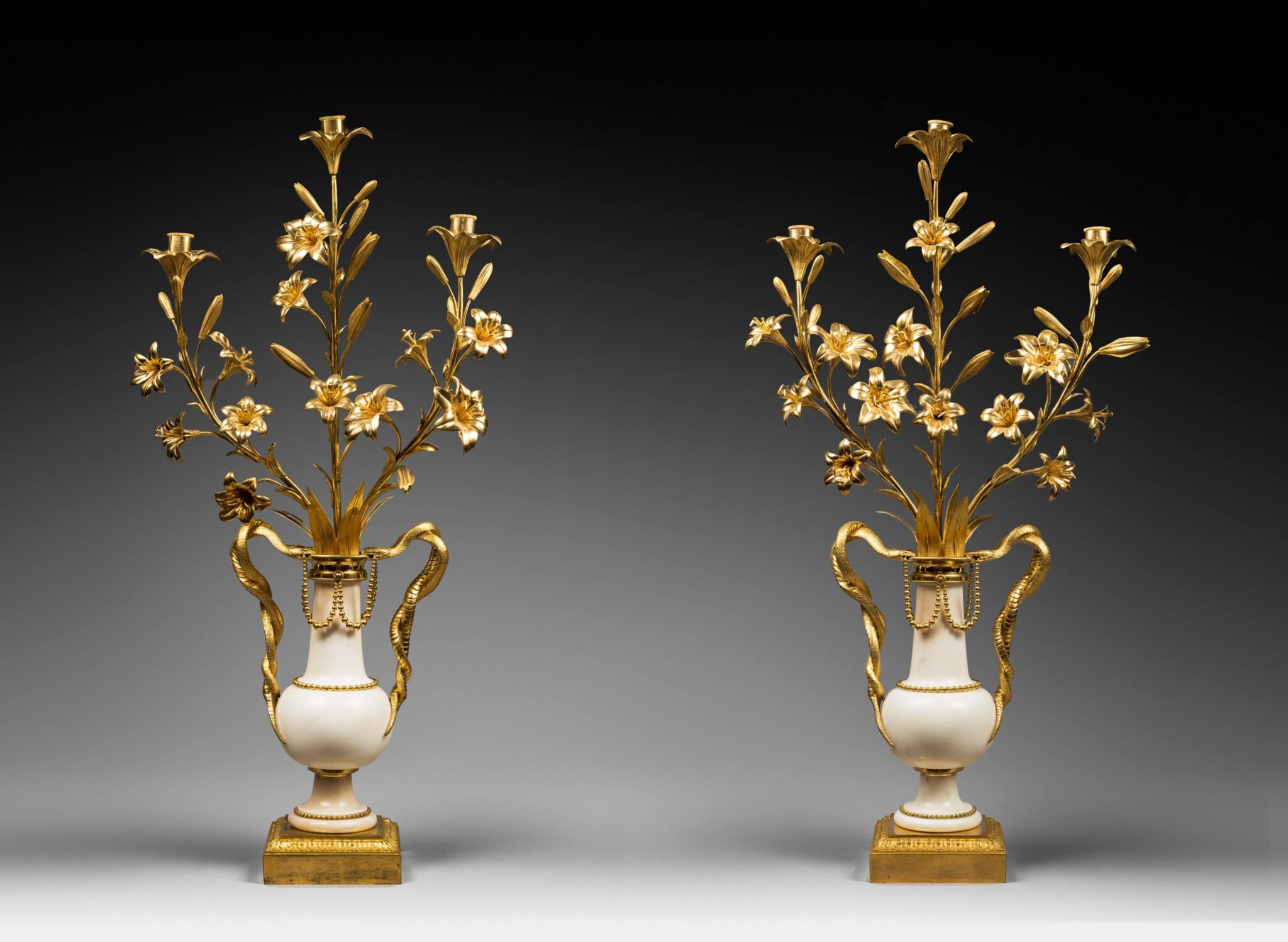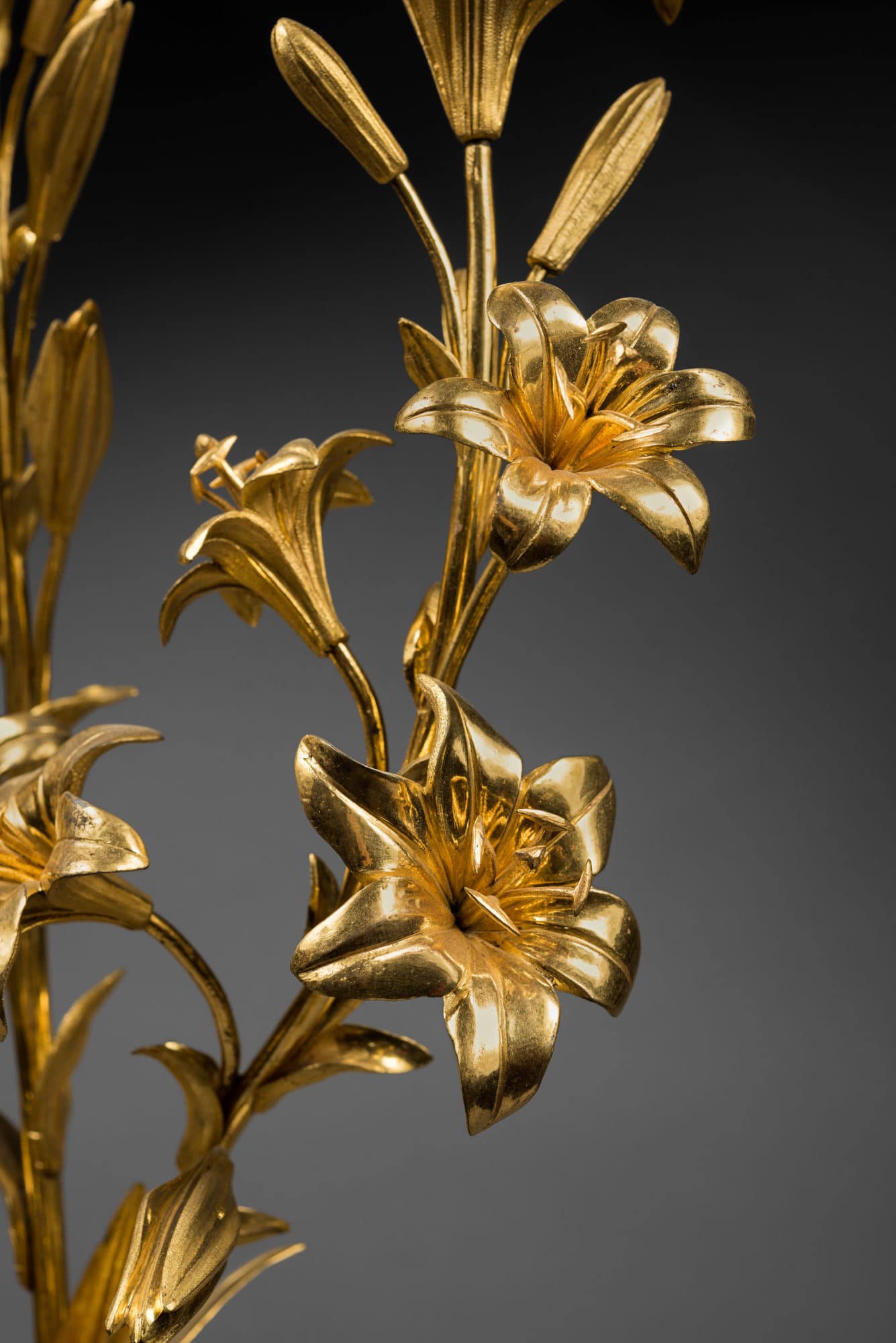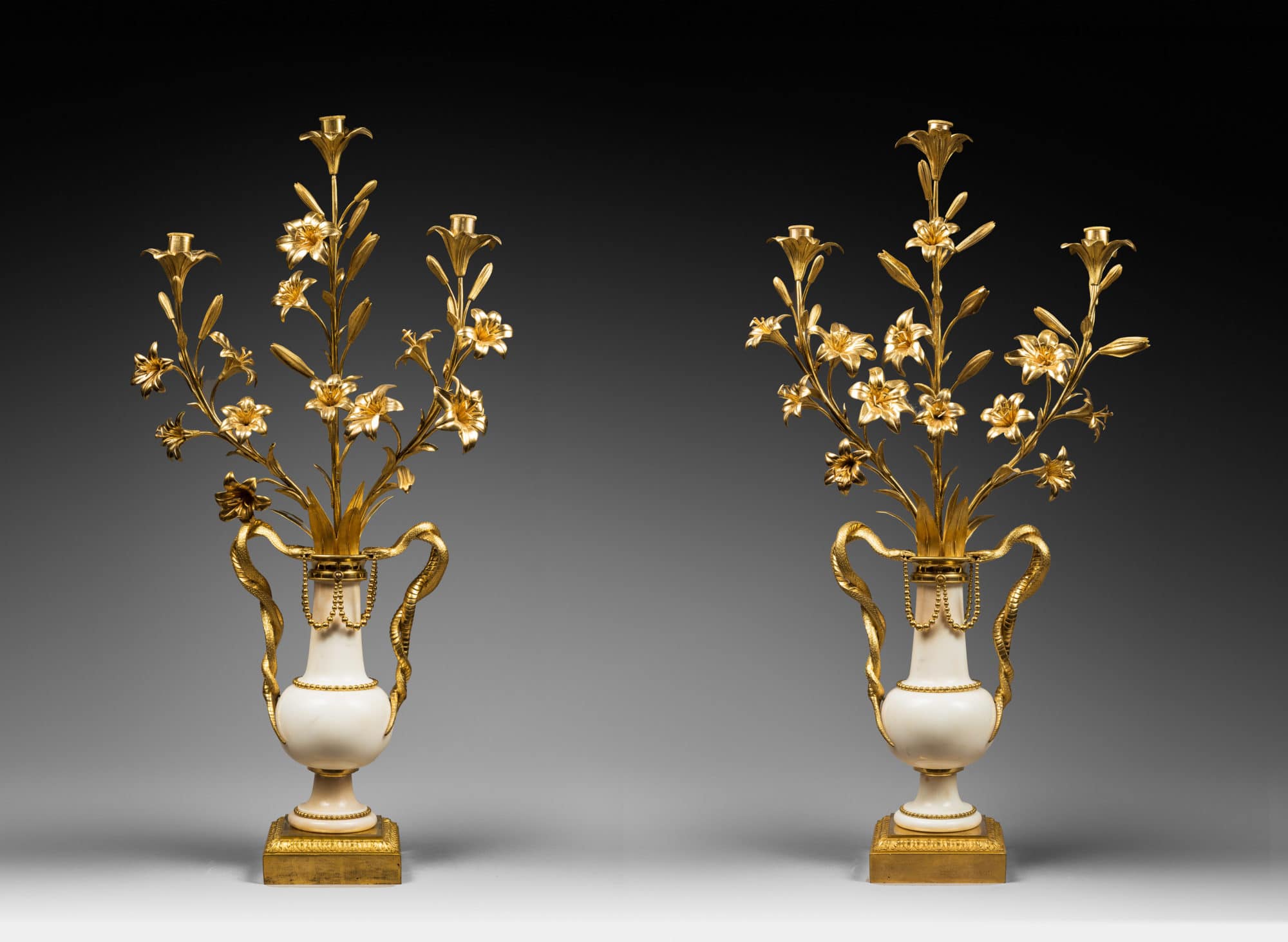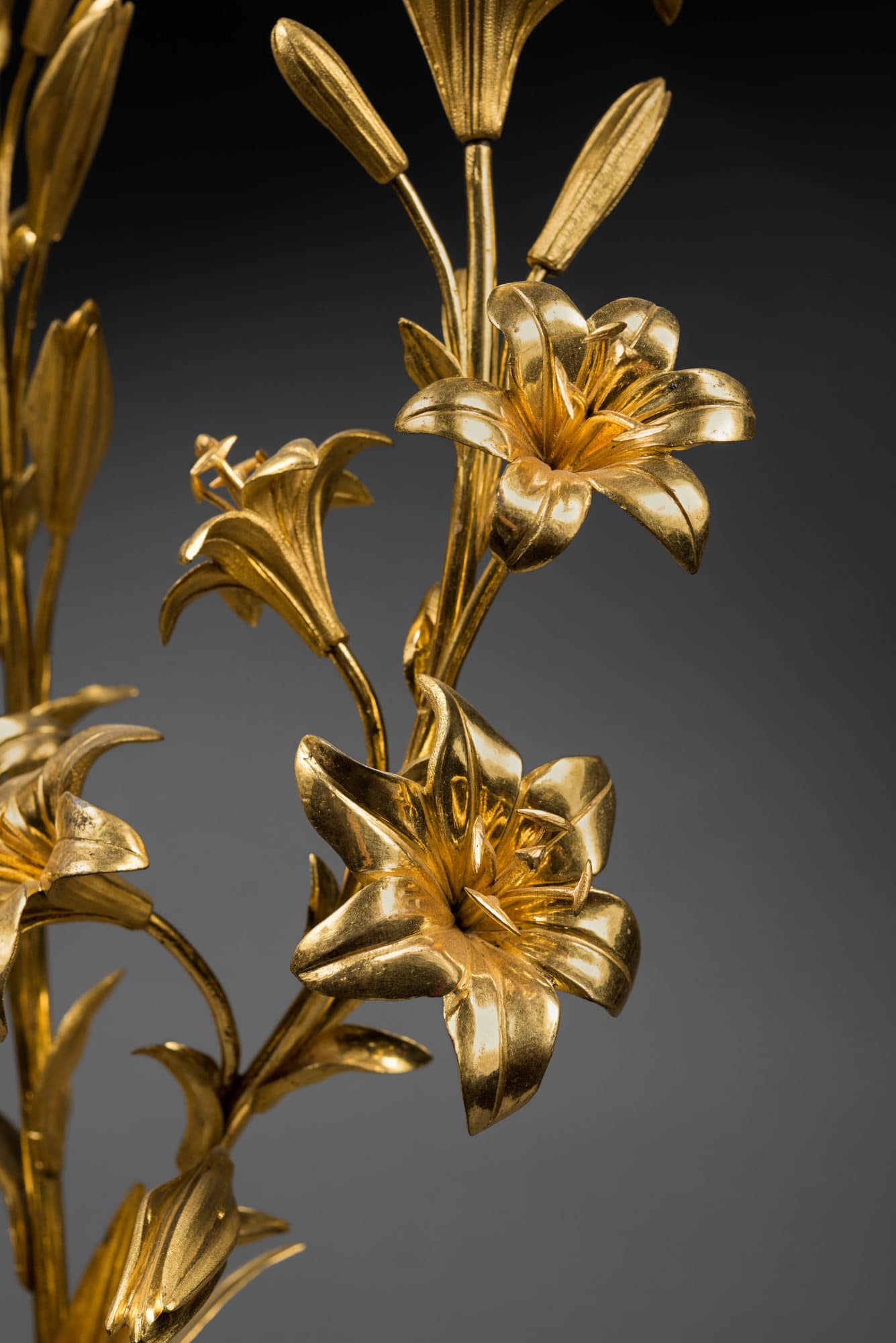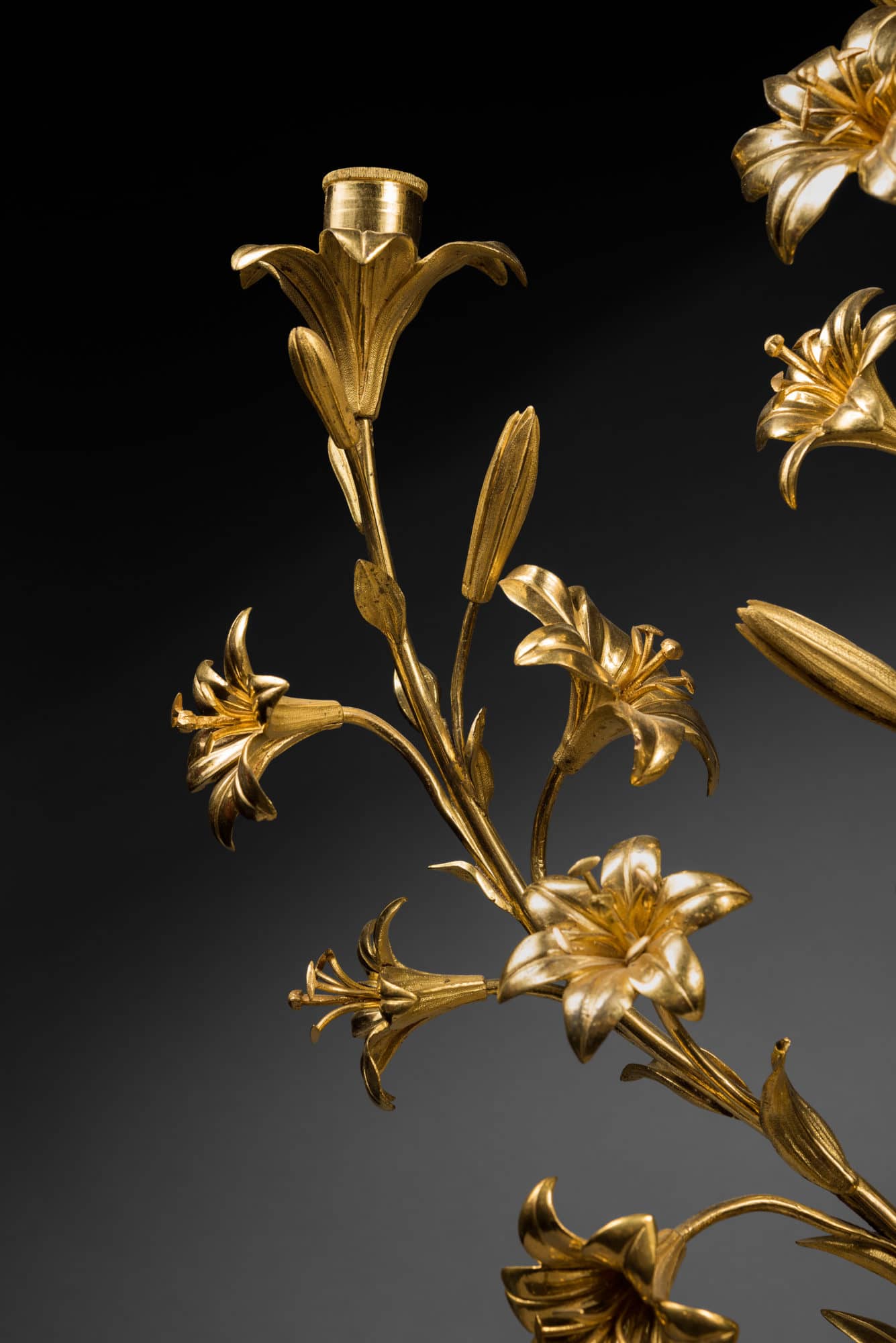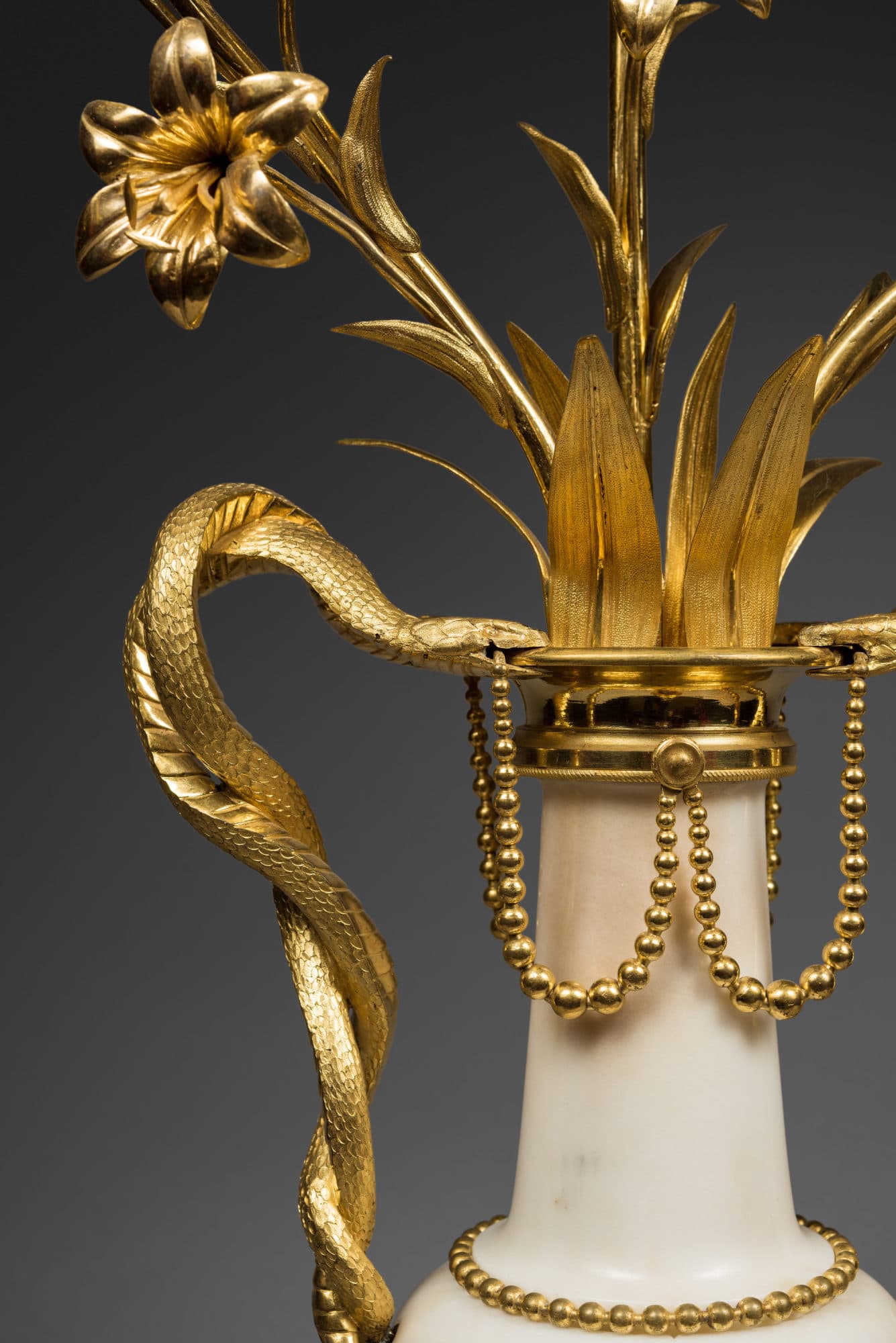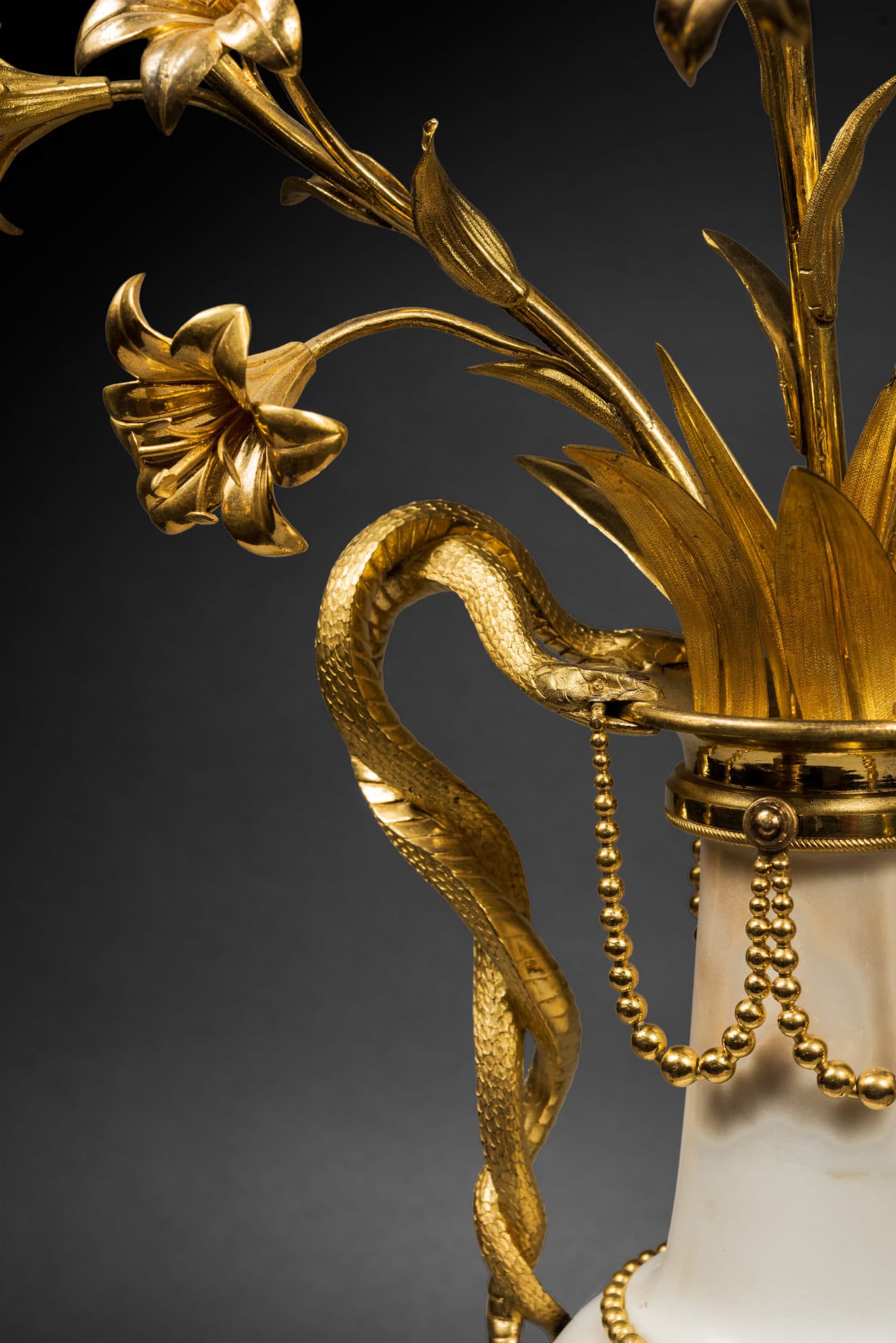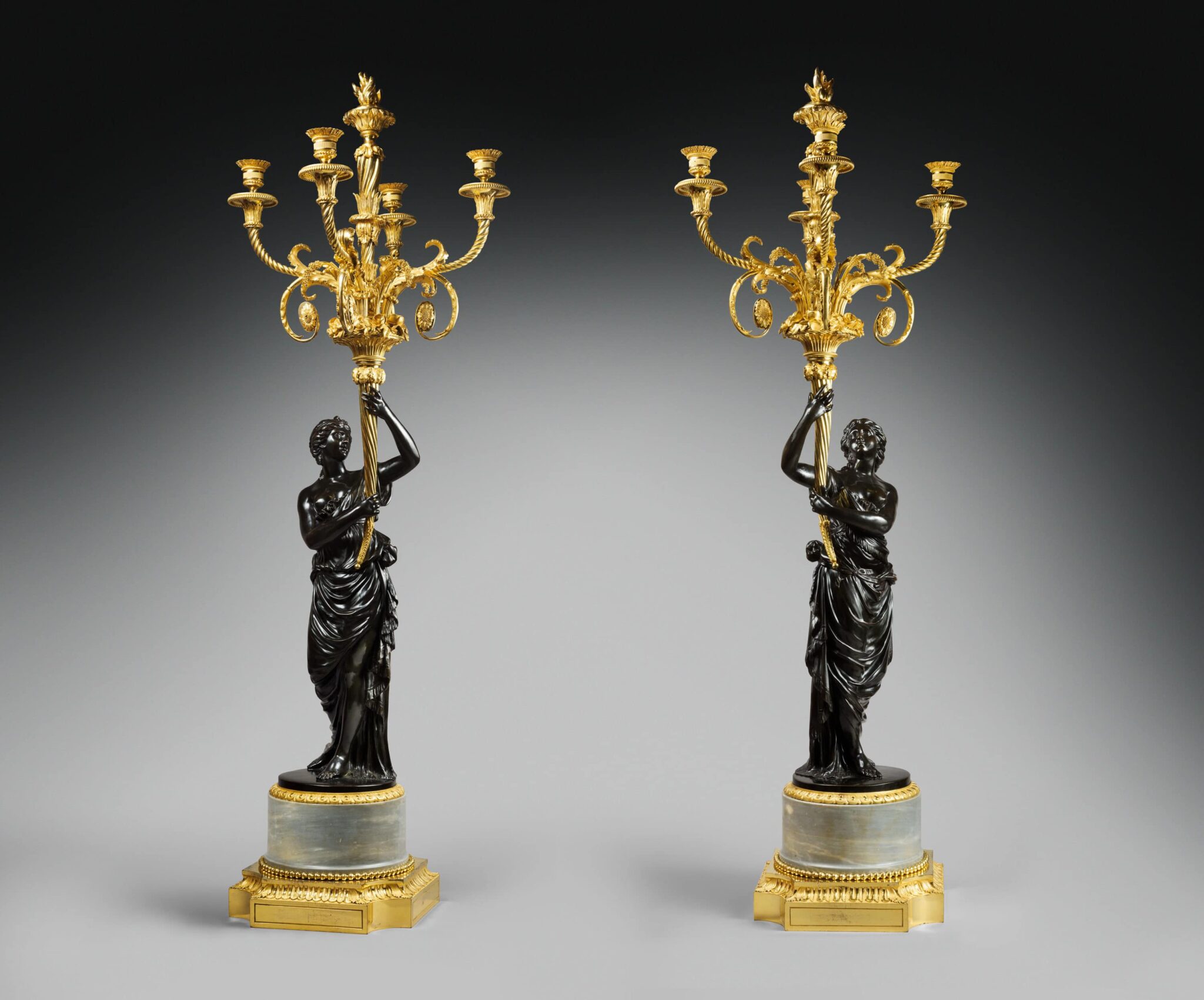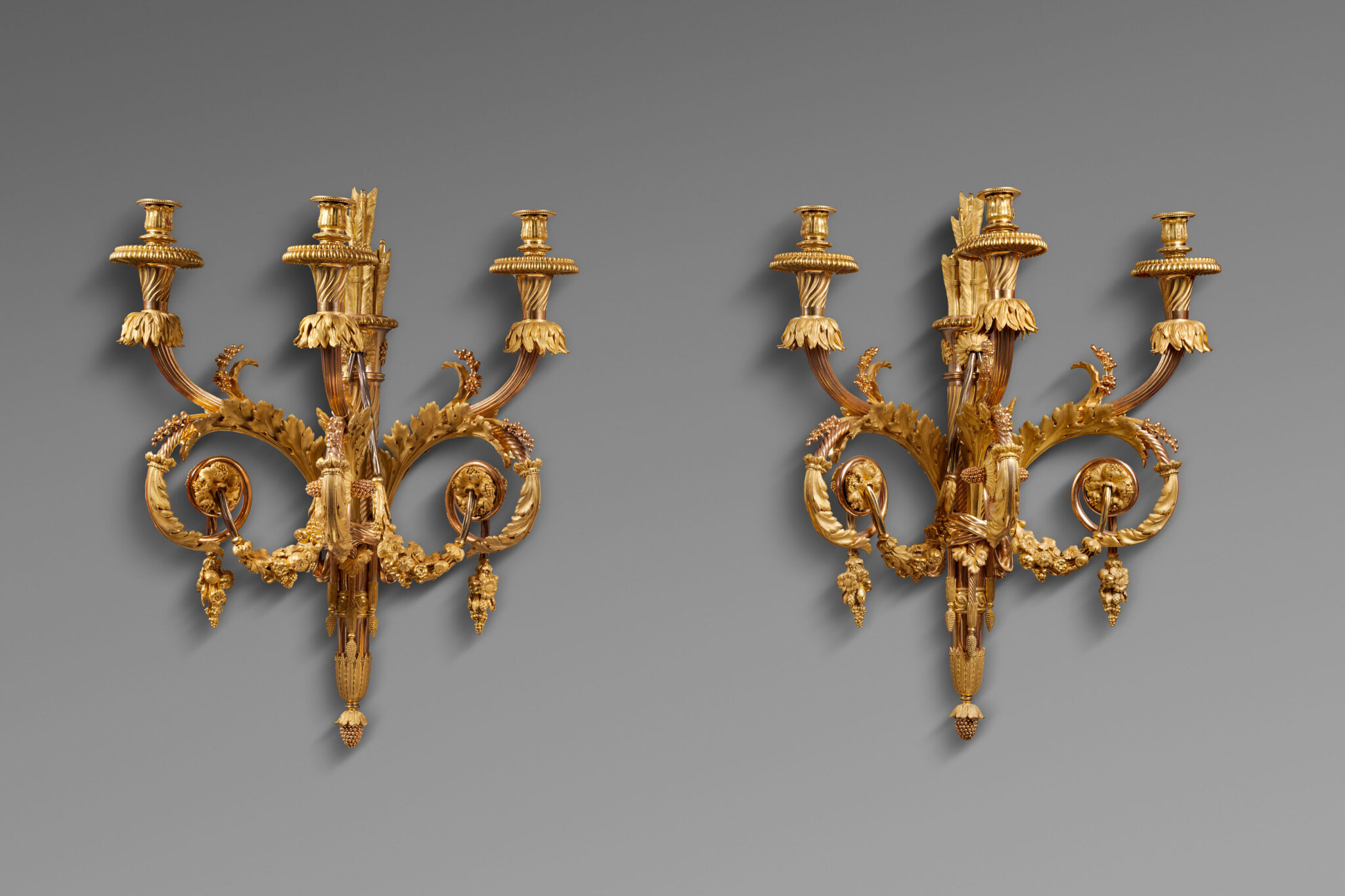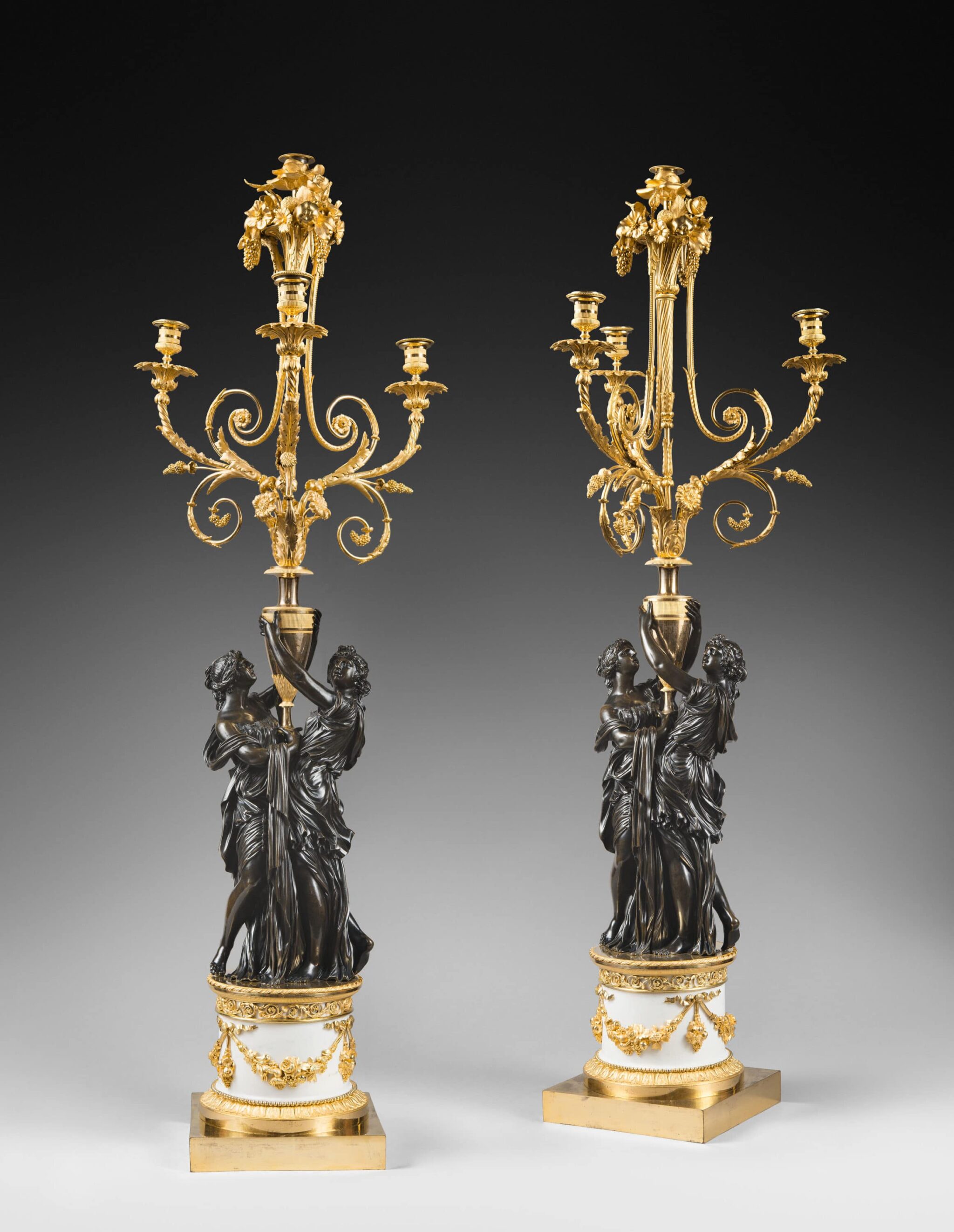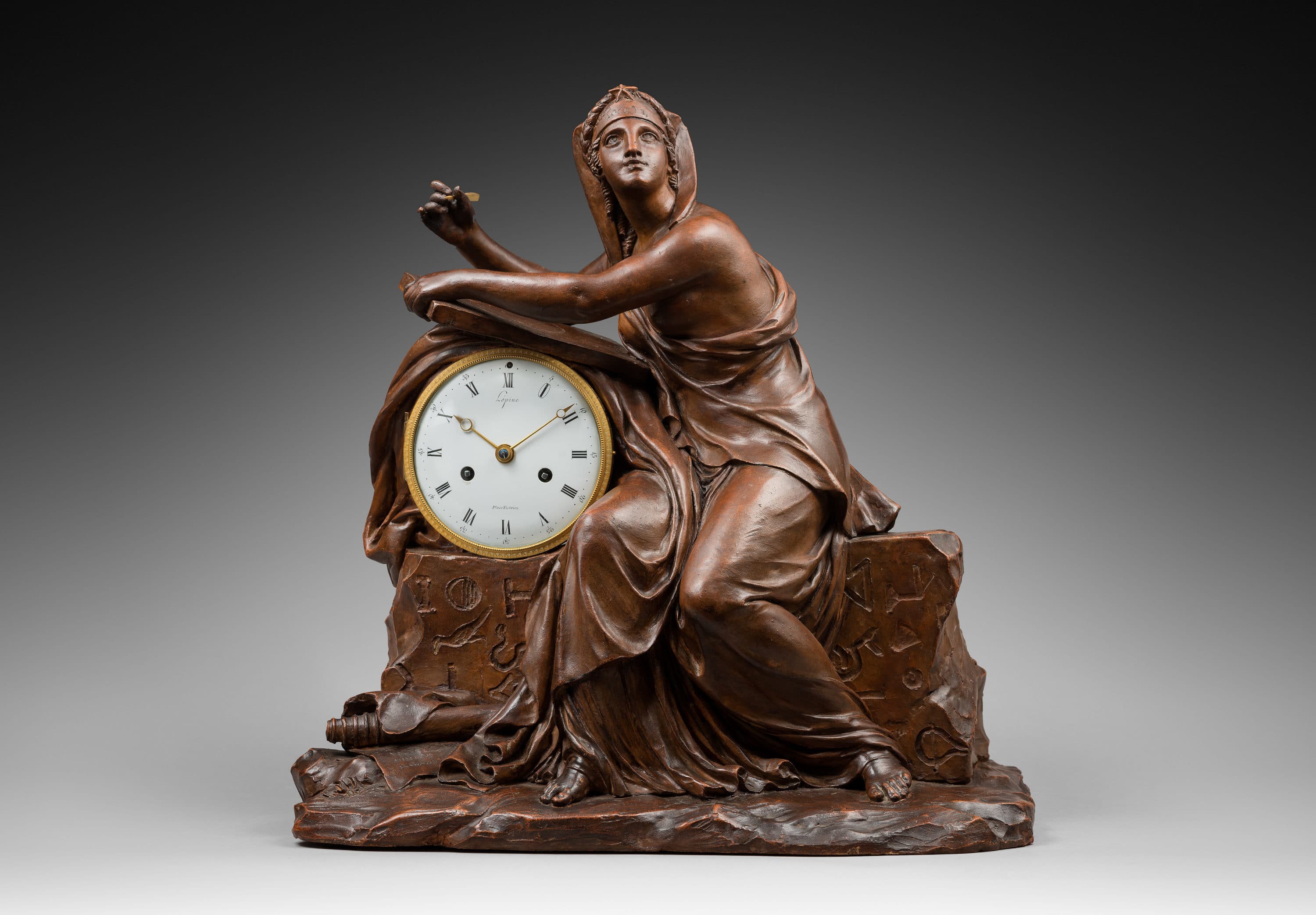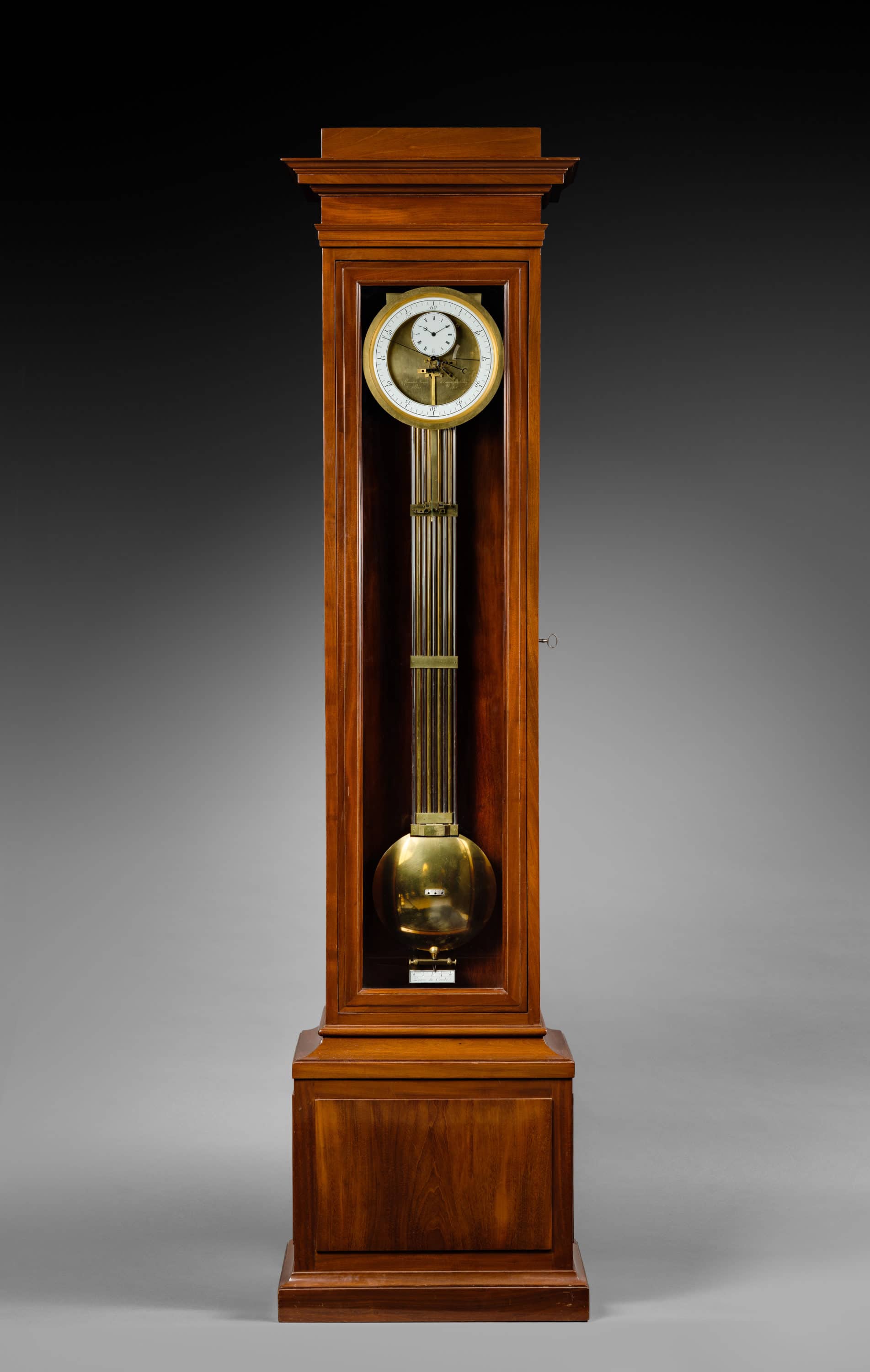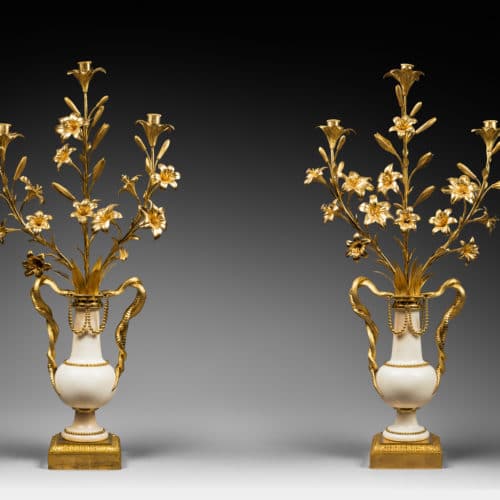A fine pair of Louis XVI three-light candelabra
A fine pair of Louis XVI three-light candelabra in gilt bronze-mounted white marble, each having three branched stems of flowering lilies terminating in a single candle nozzle surrounded by lily petals, the stems and a ring of stiff leaves issuing from a white marble baluster-shaped vase with elongated neck and splaying rim, mounted on either side by handles of entwining serpents, the heads of the snakes resting on the vase rim, with beaded swags hanging from their jaws; beaded bands adorn the body of the vase and its foot, set on a stepped square base with leaf frieze.
Distinctive lily-spray branch candelabra firstly appeared during the late 1760s; for example, those that appear in Colinet and Fois’ Les Oeuvres de sculpture en bronze contenant girandoles, flambeaux etc, published circa 1768. Similar decorative motifs were adopted by most ciseleur-doreurs of the late Louis XVI period, including François Rémond (1747-1812) and Jean-Louis Prieur (b. circa 1725 d. after 1785). A pair of candelabra in the Wallace Collection in London (circa 1766-70), with four branched lily-sprays supported by three putti, is tentatively attributed to Prieur (illustrated and described in Peter Hughes, The Wallace Collection Catalogue of Furniture, 1996, vol. III, pp. 1219-1222, no. 239, F138-9). Sometimes lily-spray candle branches were supported by female figures in diaphanous drapery; several such examples, dating from 1775, are in the Königliche Schloss, Warsaw, (illustrated in Ottomeyer and Pröschel, pp. 254-5, pls. 4.7.3-5). Lily branches were used in the circa 1780 design for a mantelpiece garniture by François-Joseph Bélanger (1744-1818), now in the Bibliothèque Nationale, Cabinet d’Estampes, Paris (illustrated in Ottomeyer and Pröschel, p. 276, pl. 4.11.13). As in the present example, the lily sprays issue from a vase with serpentine handles. A related pair pink marble vases with lily branches was in the sale of the Wildenstein Collection (Christie’s London, 14-15th December 2005, lot 124); a pair in white alabaster is illustrated in E. Molinier, Le Mobilier Français du XVIIe et XVIIe Siècle, p. 60.
A further pair was in the collection of the Earls of Rosebery, Mentmore Towers, Buckinghamshire (Sotheby’s, 18-20th May 1977, lot 80). Serpentine motifs, like lily sprays, were very popular in late eighteenth century Neo-classical design. Snakes were often depicted in the arts of ancient Greece and Rome; they were associated with eternal life, fertility, wisdom, and healing. The snake symbolised Prudence; Medusa’s hair was made up of writhing snakes; the handling of snakes played a role in certain Bacchic rites and in this way became an attribute of his attendant satyrs.
